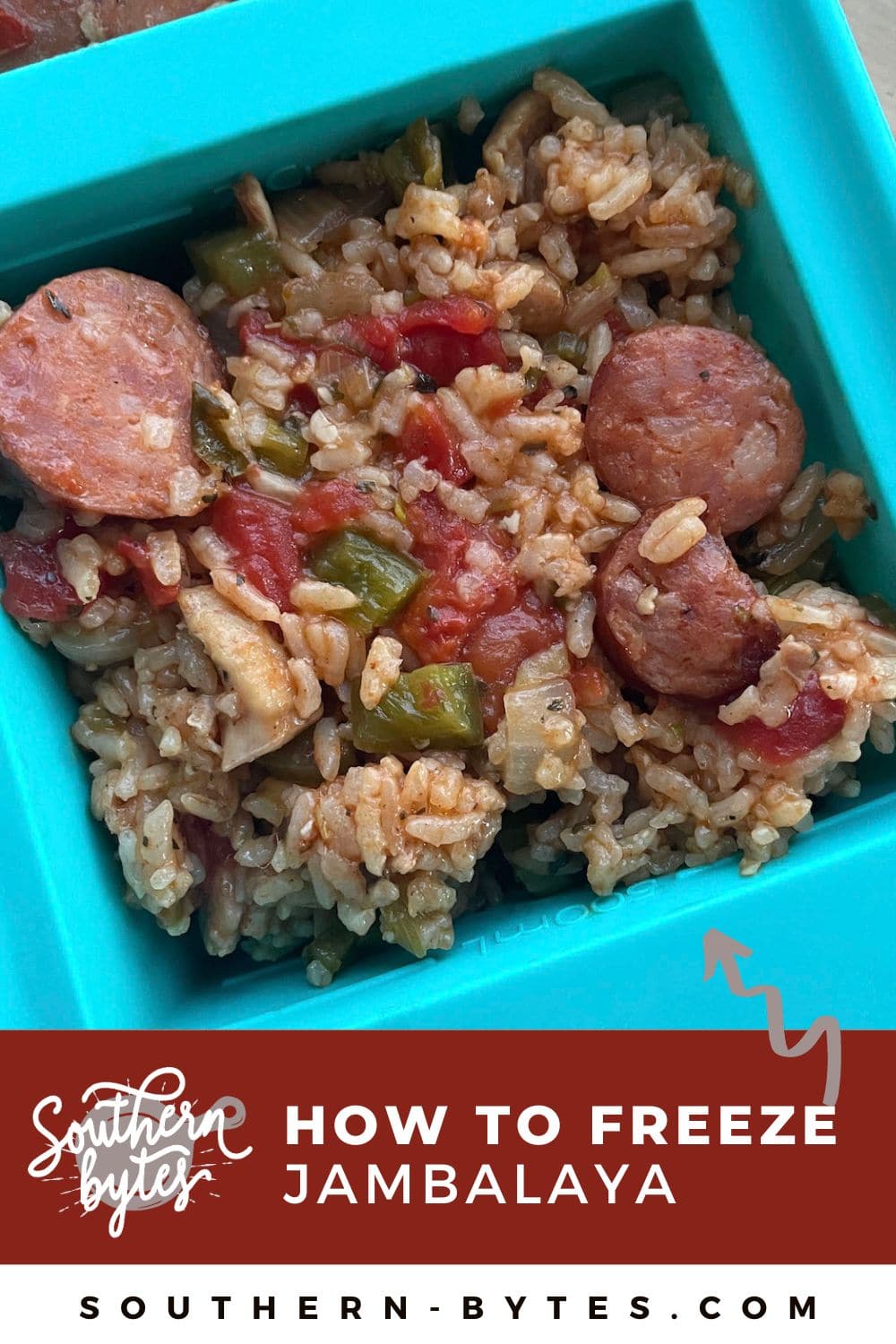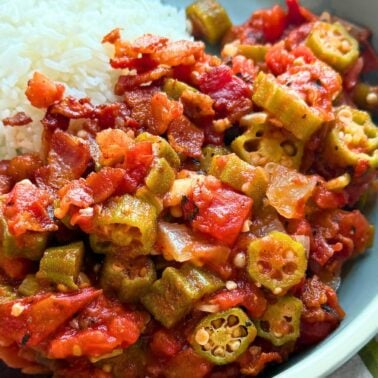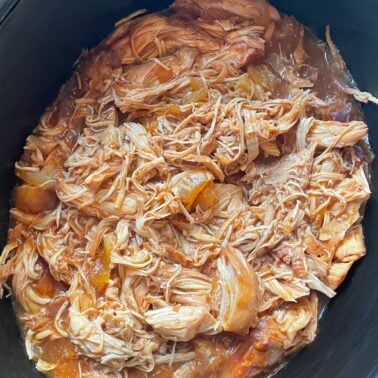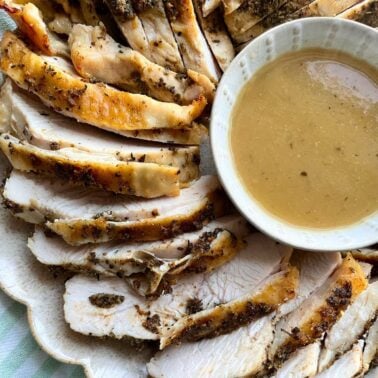Ever made a huge batch of jambalaya and ended up with more than your family can eat? It probably doesn’t happen often, but it can! We’re a family of two, so I often cook recipes written for at least four people and freeze leftovers for a busier night.
Freezing jambalaya is a fantastic way to extend its shelf life while maintaining its delicious taste and texture. Jambalaya freezes and reheats really well, so it is the perfect freezer meal.
With this guide, I’ll walk you through the steps to freeze jambalaya properly, ensuring that you can enjoy this Southern classic whenever the craving strikes – and have an easy dinner ready for busy nights after work.
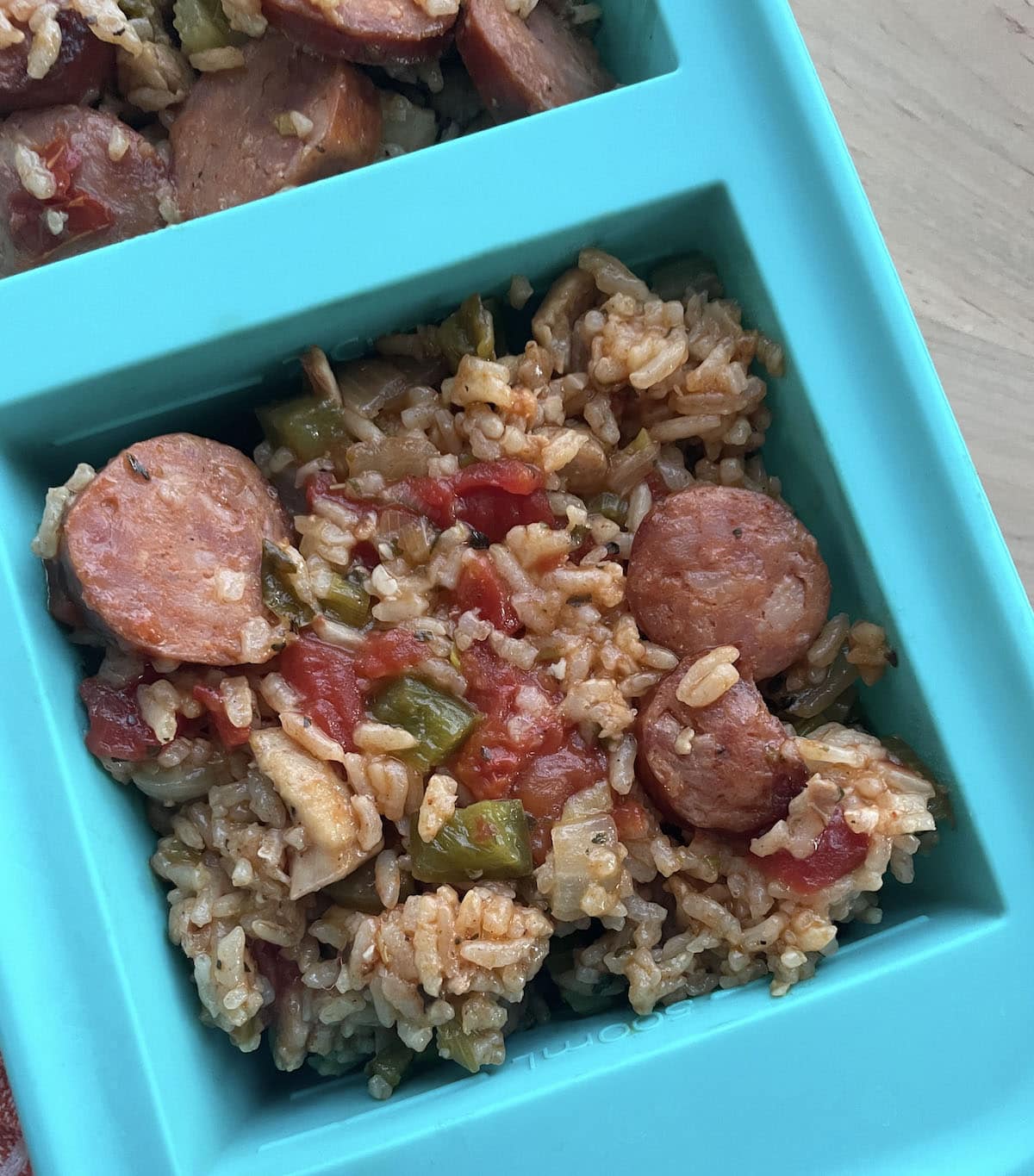
What You Will Need
- Jambalaya (Prepared and Cooled) – I either use my Creole Jambalaya Recipe or my Instant Pot Chicken and Sausage Jambalaya
- Optional: Souper Cubes (one cup or two cup) and a Vacuum Sealer
- Airtight Containers (or One Cup or Two Cup Plastic Containers) or Freezer Bags
- Labeling Materials (Marker or Adhesive Labels)
- Aluminum Foil or Plastic Wrap
How to Freeze Leftover Jambalaya to Preserve its Taste, Texture, and Quality
1. Cook Your Favorite Jambalaya Recipe
Before diving into the freezing process, ensure you have a tried-and-true jambalaya recipe that suits your taste. There are various recipes available and I have several on my site – a Classic Creole Jambalaya and an Instant Pot Jambalaya.
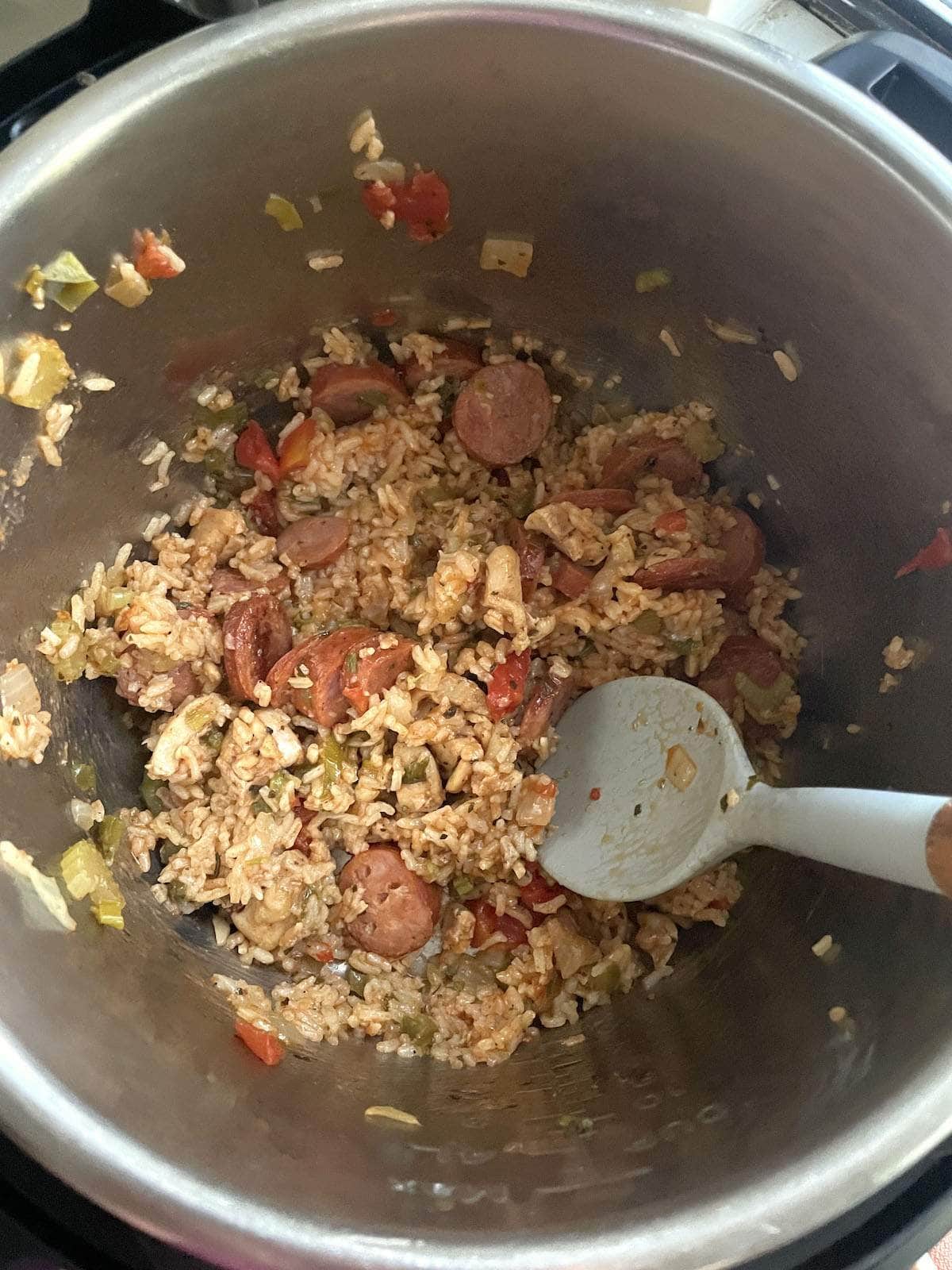
2. Allow Jambalaya to Cool to Prevent Mushy Rice
Before freezing, it’s crucial to let the jambalaya cool completely. Placing hot food in the freezer can lead to uneven freezing and can compromise the texture of the dish. Let it sit at room temperature for about 30 minutes, stirring occasionally to speed up the cooling process.
3. Choose the Right Containers
Selecting the right containers is key to preserving the quality of your jambalaya. Airtight containers, Stasher Bags, or resealable plastic bags work well for freezing. Make sure to leave some space at the top of the container or bag to allow for expansion during freezing.
If you use Souper Cubes, you can also vacuum seal your cubes of jambalaya once they are frozen solid or place them in a freezer bag and suck all the air out.
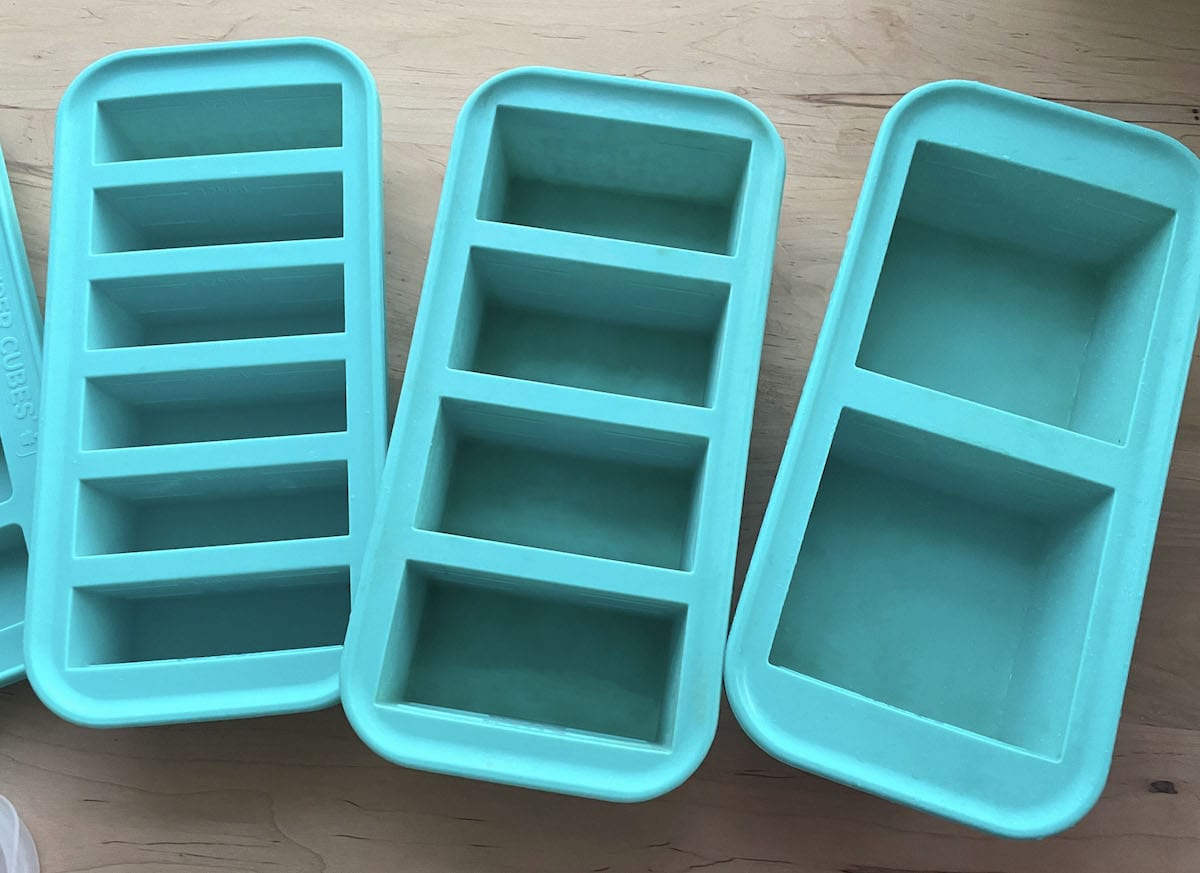
4. Portion Out the Jambalaya Leftovers
Consider dividing your jambalaya into smaller portions before freezing. I like to use Souper Cubes to split my jambalaya leftovers into one cup or two cup portion sizes. This makes it easier to thaw only what you need for dinner.
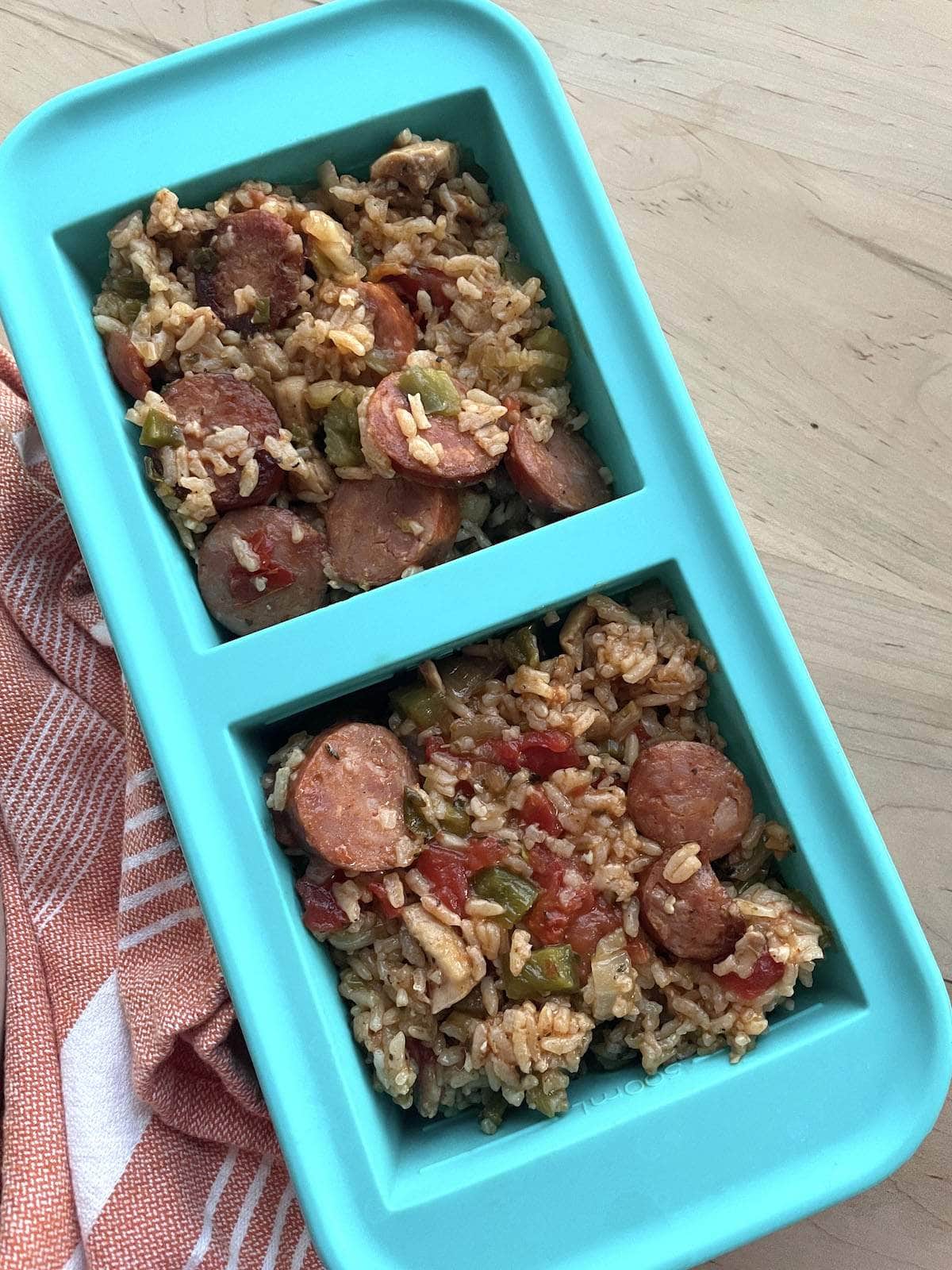
You can also use one cup or two cup plastic containers or measure scoops of jambalaya into freezer bags and squish them flat.
5. Seal and Label Containers
Seal the containers or bags tightly to prevent freezer burn and maintain the jambalaya’s freshness. Don’t forget to label each container with the date of preparation to keep track of its storage time.
Include any additional information, like the type of jambalaya (e.g., chicken and andouille sausage, seafood jambalaya, Cajun jambalaya), the quantity, or specific ingredients.
6. Add Extra Protection with Aluminum Foil or Plastic Wrap
For an extra layer of protection against freezer burn, cover the top of your containers with aluminum foil or plastic wrap before sealing. This additional step helps prevent ice crystals from forming.
- Wrap it in Plastic Wrap: If you use Souper Cubes, wrap the individual cubes in plastic wrap before putting them in freezers bags to prevent freezer burn. For added protection, wrap the cubes again with aluminum foil. (The double wrap with a layer of aluminum foil does a good job of preventing freezer burn.)
7. Freeze Jambalaya
Place your labeled and sealed containers in the freezer. If you’re using plastic bags, lay them flat to maximize space and facilitate even freezing. If you use Souper Cubes, you can stack the blocks.
8. How to Thaw and Reheat Frozen Jambalaya
- Thawing: When you’re ready to enjoy your frozen jambalaya, transfer the frozen jambalaya to the refrigerator and allow it to defrost overnight.
- Reheating: Reheat it on the stovetop or in the microwave, adding a splash of chicken broth or water to the bottom of the pot or microwave-safe dish to restore moisture.
- You can reheat jambalaya in a small slow cooker as well, just be sure to let it thaw in the fridge a little first.
To Prevent Mushy Rice
I like to use a fork to fluff the rice so it does not get mushy, and do not stir it too much.
Garnish with some diced green onions, a sprinkle of Cajun seasoning, and some hot sauce, and serve with your favorite side dishes. (I like to heat up a cup of frozen gumbo or some garlic toast when I make jambalaya.)
How Long Can You Freeze Jambalaya Leftovers?
For best results, use the jambalaya within three months, though I have used my leftovers after as long as a year.
Freezing jambalaya is a convenient way to be able to savor this flavorful dish whenever the mood strikes. By following these simple steps, you can ensure that your frozen jambalaya retains its authentic taste and becomes a quick and satisfying meal option.
So, the next time you whip up a big batch of jambalaya, freeze the leftovers and enjoy a taste of Louisiana cuisine anytime you please.
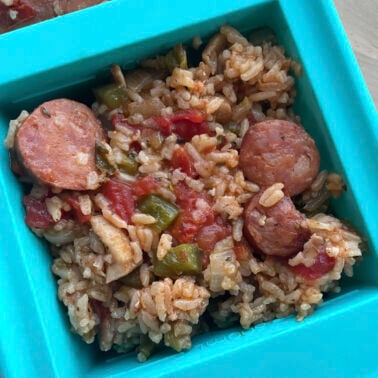
How to Freeze Jambalaya
Ingredients
- 2-3 cups leftover jambalaya
Instructions
- Cook your favorite jambalaya recipe.
- Allow the jambalaya to cool to prevent mushy rice.2-3 cups leftover jambalaya
- Portion out the jambalaya leftovers into appropriate containers.
- Seal the containers or bags tightly to prevent freezer burn and label each container with the date of preparation and the contents.
- For an extra layer of protection against freezer burn, cover the top of your containers with aluminum foil or plastic wrap before sealing.
- Place your labeled and sealed containers in the freezer.
- For best results, use the jambalaya within three months, though I have used my leftovers after as long as a year.
Notes
How to Thaw and Reheat Frozen Jambalaya
- Thawing: When you’re ready to enjoy your frozen jambalaya, transfer the frozen jambalaya to the refrigerator and allow it to defrost overnight.
- Reheating: Reheat it on the stovetop or in the microwave, adding a splash of chicken broth or water to the bottom of the pot or microwave-safe dish to restore moisture.
- You can reheat jambalaya in a small slow cooker as well, just be sure to let it thaw in the fridge a little first.
Nutrition information is approximate and is automatically calculated, so should only be used as a guide.

